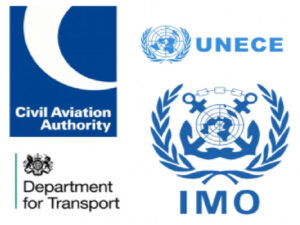Introduction
In the intricate world of handling dangerous goods, being prepared for emergencies is not just a regulatory requirement but a critical aspect of ensuring the safety of personnel, the public and the environment. In this blog, we will unravel the key components of effective emergency response procedures for incidents involving hazardous materials. Learn about the necessary steps to handle spills, leaks and other emergencies, emphasising the importance of proper communication, containment and mitigation strategies to protect lives and the environment.
Understanding Emergency Response Procedures for Dangerous Goods Incidents
- Immediate Assessment: When a dangerous goods incident occurs, the first step is to conduct an immediate assessment of the situation. This involves identifying the type of hazardous material involved, the extent of the spill or leak and potential risks to personnel, the public and the environment.
- Communication Protocols: Effective communication is paramount during dangerous goods incidents. Establishing clear communication channels ensures that relevant stakeholders, including emergency responders, regulatory agencies and affected parties, are informed promptly. Proper communication helps in coordinating response efforts and mitigating the impact of the incident.
- Personnel Safety: The safety of personnel involved in handling dangerous goods is of utmost importance. Emergency response procedures should include protocols for ensuring the well-being of individuals in the vicinity of the incident. This may involve evacuation, the use of personal protective equipment (PPE) and medical attention as necessary.
Steps to Handle Spills, Leaks and Other Emergencies Involving Hazardous Materials
- Containment: Containment is a critical step in preventing the spread of hazardous materials. This involves using barriers, absorbents, or other appropriate methods to limit the movement of the substance. Quick and effective containment measures can mitigate the severity of the incident.
- Identification and Classification: Proper identification and classification of the hazardous material involved are crucial for determining the appropriate response actions. Emergency responders must have access to information about the properties of the material, potential health hazards and recommended handling procedures.
- Mitigation Strategies: Once the incident is contained, the focus shifts to mitigation strategies. This may involve neutralising the hazardous material, using a spill kit, transferring it to a secure container, or implementing other measures to reduce the risk of further harm. Effective mitigation strategies are essential for minimising environmental impact and preventing the escalation of the incident.
- Decontamination: Decontamination procedures are crucial to prevent the spread of hazardous substances and protect both responders and the environment. This involves removing or neutralising contaminants from affected surfaces, equipment and personnel. Proper decontamination measures contribute to a safer and more controlled response environment.
Importance of Proper Communication, Containment and Mitigation Strategies
- Preventing Escalation: Effective communication, containment and mitigation strategies work in tandem to prevent the escalation of dangerous goods incidents. Timely and accurate communication ensures that response efforts are coordinated, containment measures limit the spread of the material and mitigation strategies address the root cause of the incident.
- Protecting Lives and the Environment: The primary goal of emergency response in dangerous goods situations is to protect lives and the environment. Proper communication keeps individuals informed and enables them to take necessary safety measures. Swift containment and mitigation strategies contribute to minimising the impact on the environment and preventing harm to both responders and the public.
- Compliance with Regulations: Regulatory bodies prescribe specific emergency response requirements for the transportation and handling of dangerous goods. Adhering to proper communication, containment, and mitigation protocols ensures compliance with these regulations, protecting organisations from legal consequences and reputational damage.
Incorporating Industry Best Practices
- Training and Preparedness: The effectiveness of emergency response procedures relies on the preparedness of personnel. Regular training exercises, drills and simulations help ensure that individuals are familiar with protocols and can respond confidently and efficiently during real incidents.
- Collaboration with Emergency Responders: Collaborating with local emergency responders, such as fire departments and hazardous materials response teams, is essential. Establishing prearranged partnerships and conducting joint training exercises enhance coordination during actual incidents, leading to more effective responses.
- Continuous Improvement: After each incident, organisations should conduct thorough debriefs to identify areas for improvement in their emergency response procedures. This continuous improvement approach enhances the organisation’s ability to handle future incidents more effectively.
Conclusion
Effective emergency response in dangerous goods situations is a cornerstone of responsible and safe operations. By understanding and implementing proper communication, containment and mitigation strategies, organisations can protect lives, minimise environmental impact and comply with regulatory requirements. Training, collaboration with emergency responders and a commitment to continuous improvement are key elements in building a robust emergency response framework. In the world of dangerous goods, being prepared means navigating crises with resilience, ensuring a safer and more secure future for all.
To find out more about joining our dangerous goods training programmes, contact the Logicom Hub team today on 0330 912 5041 or email us at [email protected].




